Best dslr cameras for beginners For 2025:Ultimate Guide
Tuesday 07 May 2024
 4.6k
4.6k
 Reproduction without the author's authorization is prohibited
Reproduction without the author's authorization is prohibited
Camera manufacturers have gradually stopped updating their dslr product lines, but this does not mean that dslr has completely fallen behind. On the contrary, you can buy these products that once stood at the top at a lower price and get enough excellent performance.
The difference between dslr and mirrorless camera
The difference between DSLR (Digital Single-Lens Reflex) and mirrorless cameras is primarily in their design and functionality:
The Mirror Mechanism: DSLR cameras use a mirror system to reflect light from the lens up into an optical viewfinder. When you take a photo, the mirror flips up to allow light to hit the sensor. Mirrorless cameras, as the name suggests, do not have this mirror mechanism, which allows them to be more compact.
Size and Weight: Due to the lack of a mirror and optical viewfinder, mirrorless cameras are generally smaller and lighter than DSLRs.
Autofocus Speed: Mirrorless cameras often have faster and more accurate autofocus systems because they use on-sensor phase detection, which allows for continuous autofocus in live view and video modes.
Viewfinders: DSLRs use optical viewfinders that show a direct optical view through the lens, while mirrorless cameras use electronic viewfinders (EVFs) or just the digital screen to display the image sensor’s view.
Battery Life: DSLRs typically have longer battery life because they can shoot without using the LCD screen or EVF, which consume a lot of power. Mirrorless cameras rely on these electronic displays, which can drain the battery faster.
Lens Selection: DSLRs have been around longer, so there’s a wider selection of lenses available. However, mirrorless systems are rapidly catching up, and many new lenses are being developed specifically for mirrorless cameras.
Video Capabilities: Mirrorless cameras are often better suited for video recording, Just like sony zve10, offering features like 4K video, better autofocus during video, and more compact designs for handheld shooting.
Each type has its advantages, and the choice between a DSLR and a mirrorless camera will depend on your specific needs and preferences. While DSLRs offer a traditional shooting experience with longer battery life and a vast lens ecosystem, mirrorless cameras are more compact, with advanced video features and faster autofocus systems.
Is dslr obsolete?
DSLR cameras are not entirely obsolete, but they are certainly facing a decline in development and popularity. Major camera manufacturers like Canon and Nikon have announced that they will no longer be releasing new DSLR models, indicating a shift towards mirrorless technology. This doesn’t mean that DSLRs are no longer usable or that they don’t have their own advantages. Many photographers still prefer DSLRs for their optical viewfinders, battery life, and the tactile experience they offer.
However, the market and technological advancements are leaning towards mirrorless cameras. They are generally smaller, lighter, and offer more advanced video capabilities and autofocus systems. The transition to mirrorless cameras is similar to how film cameras gave way to digital; it’s an evolution of technology rather than a complete dismissal of what came before.
DSLRs still have a place, especially in the secondhand market where they offer great value for money. They remain popular among many photographers who appreciate their reliability and the extensive range of lenses available. So while DSLRs may not be the cutting edge of camera technology anymore, they are far from being dead and continue to be a viable option for photography enthusiasts and professionals alike.
What photographer is suitable for dslr?
DSLR cameras are suitable for photographers who:
Prefer a traditional shooting experience: Many photographers appreciate the tactile feel of a DSLR, the sound of the mirror mechanism, and the use of an optical viewfinder.
Value robustness and durability: DSLRs are known for their sturdy build, which can withstand harsher conditions and rough handling.
Require superior battery life: DSLRs typically offer longer battery life compared to mirrorless cameras, making them ideal for extended shooting sessions or when traveling to locations where charging may not be possible.
Have a collection of lenses: Photographers with an existing collection of lenses might prefer DSLRs, as they can continue to use their lenses without needing adapters.
Engage in specific types of photography: Some photographers might find DSLRs more suitable for certain types of photography like sports, wildlife, or astrophotography, where the optical viewfinder and battery life can be advantageous.
Are on a budget: DSLRs can be more affordable, especially in the secondhand market, offering great value for money.
Nikon D3500
Reason for recommendation: Nikon D3500 was once a very popular half-frame SLR camera, which was launched in 2018. It's widely available, very easy to buy, and there's all the instructions you need about it on the Internet. Those that are cheaper than it are not as good as it, and those that are better than it are not as cheap as it. This is the reason why I recommend the Nikon D3500.
The Nikon D3500 is a popular entry-level DSLR camera known for its user-friendly features and high-quality image capabilities
Effective Pixels: 24.2 million
Image Sensor: 23.5 x 15.6 mm CMOS sensor
ISO Range: 100-25600
Image Processing Engine: EXPEED 4
Autofocus Points: 11 AF points
Continuous Shooting: Up to 5 frames per second
Video: Full HD 1080/60p
Connectivity: Bluetooth with SnapBridge app for image transfer
Battery Life: Approximately 1,550 shots per charge
Price: $500 to $600
The D3500 is designed with a lightweight and ergonomic body, making it comfortable for extended use. It also features a Guide Mode, which provides step-by-step assistance, making it an excellent choice for beginners. Additionally, the camera supports SD, SDHC, and SDXC memory cards and has a variety of Picture Control settings to enhance your images.
For more detailed information, you can visit Nikon’s official website or read comprehensive reviews from trusted photography sources.
Canon EOS 90D
Reason for recommendation: 32.5MP CMOS sensor, the image quality is still the first echelon among aspc cameras. It also has 4k30fps video shooting capabilities. Considering its price and third-party lenses, the Canon EOS 90D is still a competitive DSLR.
The Canon EOS 90D is a versatile digital single-lens reflex (DSLR) camera released by Canon on August 28, 2019.
High Image Quality: The EOS 90D boasts a 32.5-megapixel APS-C CMOS sensor, providing excellent image detail and clarity. Paired with the powerful DIGIC 8 image processor, it delivers impressive image quality even in challenging lighting conditions.
High-Speed Continuous Shooting: Capture fast-paced action with up to 10 frames per second continuous shooting, ensuring you don’t miss any crucial moments.
4K Video: The EOS 90D supports 4K (UHD) video recording at 30fps and Full HD video at 120fps. Whether you’re shooting landscapes or dynamic scenes, this camera has you covered.
45-Point All Cross-Type AF System: The camera’s autofocus system features 45 cross-type AF points, allowing precise focus even in complex compositions. It also supports up to 27 points with f/8 metering, making it compatible with telephoto lenses and extenders.
Optical Viewfinder and Dual Pixel CMOS AF: The optical viewfinder provides a clear, real-time view with minimal lag, while the Dual Pixel CMOS AF in Live View offers 5,481 manually selectable AF positions for precise focusing.
High-Speed Shutter: With a mechanical shutter speed range of 1/8000 to 30 seconds, freeze fast-moving subjects or create motion blur effects. Additionally, the camera supports an electronic shutter speed of up to 1/16000 second for bright outdoor shooting.
Improved Mirror and Shutter Durability: The EOS 90D’s mirror unit has been optimized for high-speed continuous shooting, ensuring reliable performance even with increased shot counts.
Eye Detection AF: Utilize eye detection autofocus for both stills and video, ensuring sharp focus on your subject’s eyes.
Touchscreen Functionality: The camera features a rotatable LCD monitor with touchscreen capabilities, allowing intuitive control and quick focus point selection.
Wide AF Area Coverage: With 5,481 manually selectable AF points, you can precisely lock focus on your subject. The camera also automatically expands the AF area to cover approximately 88% x 100% of the image sensor area when using compatible lenses.
The Canon EOS 90D strikes a balance between high resolution, fast performance, and creative versatility, making it an excellent choice for enthusiasts and photographers looking to explore various genres of photography and videography.
Nikon D6
The Nikon D6 is a professional-grade DSLR camera known for its robust build and advanced features. It was released on February 12, 2020, and is designed to meet the demanding needs of professional sports and press photographers. Here are some key features of the Nikon D6:
High-Density Autofocus System: The camera boasts a powerful autofocus system with 105 cross-type focus points.
High-Speed Continuous Shooting: It can capture images at approximately 14 frames per second.
EXPEED 6 Image Processor: This ensures high-quality images even in low-light conditions, with a standard ISO range up to 102400.
Dual JPEG Recording: The D6 allows recording two JPEG images simultaneously with different image size and quality settings.
Enhanced Workflow: Features like prioritizing important images for faster transmission are included to improve post-shooting workflow.
Wi-Fi and Wireless Transmission: It supports fast 1000BASE-T wired communication, as well as wireless communication via built-in Wi-Fi and the WT-6 wireless transmitter.
The Nikon D6 is compatible with a wide range of Nikkor lenses, especially long focal lengths up to 800mm, which are beneficial for capturing high-quality images from a distance.
For those interested in purchasing the Nikon D6 in the United States, it is priced at $6,499.95 and comes with special financing offers. It’s a flagship DSLR that lives up to professional standards in various environments, offering Nikon’s most powerful AF system to date.
Please note that as of April 1, 2024, some Nikon applications will be temporarily unavailable for download from the Apple App Store and Nikon’s official website. For any inquiries, customers can contact Nikon’s customer service hotline.
Canon EOS 6D Mark II
The Canon EOS 6D Mark II is a versatile full-frame DSLR camera that caters to photography enthusiasts and professionals alike. It was released as an improvement over its predecessor, the original EOS 6D. Here are some of the key features of the Canon EOS 6D Mark II:
26.2 Megapixel Full-frame CMOS Sensor: Delivers high-resolution images with fine detail and excellent low-light performance.
45-point All Cross-type AF System: Provides fast and accurate autofocus, even in challenging lighting conditions.
Dual Pixel CMOS AF with Phase-Detection: Ensures smooth and precise focus for both stills and video, particularly beneficial during live view shooting.
DIGIC 7 Image Processor: Offers improved image quality and speed, with an ISO range of 100-40000, expandable to 102400.
Full HD 60p Video Recording: Captures high-quality video footage with in-lens and digital stabilization.
Vari-angle Touch Screen: A fully articulating touchscreen allows for flexible shooting angles and easy operation.
Built-in Wi-Fi, NFC, Bluetooth, and GPS: Enables easy sharing of images and remote camera control, along with geotagging capabilities.
The Canon EOS 6D Mark II is praised for its improved resolution, autofocus performance, and burst shooting speed compared to its predecessor. It’s also noted for its fully articulating touchscreen, built-in connectivity options, and 6.5 fps burst shooting.
For those interested in purchasing, the Canon EOS 6D Mark II is available at a price point starting around $1,399.00. It’s a strong contender in the ‘entry-level’ full-frame camera market, offering a substantial feature set at a competitive price.
If you’re considering the Canon EOS 6D Mark II, it’s a solid choice for advanced amateurs looking for a full-frame experience, as well as professionals seeking a reliable second body camera. Its combination of performance and price makes it a valuable addition to a photographer’s toolkit.
Pentax K-1 Mark II
The Pentax K-1 Mark II is a full-frame DSLR camera that stands out for its high-resolution imaging capabilities and robust design, suitable for a variety of shooting conditions. Here are some of the key features of the Pentax K-1 Mark II:
36.4 Megapixel Full-frame CMOS Sensor: Delivers detailed images with a wide dynamic range.
ISO Sensitivity: Offers a top sensitivity of ISO 819200, allowing for shooting in a variety of lighting conditions.
Pixel Shift Resolution System II: Enhances image quality beyond the sensor’s resolution, now supporting handheld shooting.
5-axis, 5-step Shake Reduction: Helps to minimize camera shake for clearer images.
Weather-Sealed Construction: Ensures durability and resistance to weather and environmental conditions.
Advanced AF System: Features a new algorithm for improved autofocus accuracy, especially in dynamic shooting situations.
The Pentax K-1 Mark II is designed to produce high-quality images that capture rich colors and subtle shades, with a beautiful bokeh and a well-defined sense of depth. It’s a camera that appeals to both professionals and serious hobbyists who require high performance in challenging field conditions.
For those interested in the latest updates, the Pentax K-1 Mark II has had several firmware updates to enhance its performance and features. The most recent update was on April 11, 2024, which brought the firmware version to 2.42.
The Pentax K-1 Mark II continues the legacy of its predecessor by improving upon the features that made the original K-1 a popular choice among photographers who value image quality and camera durability.
Nikon D750
The Nikon D750 is a well-regarded full-frame DSLR camera that strikes a balance between features and price, making it a popular choice for both enthusiasts and professional photographers. Here are some of the key features of the Nikon D750:
24.3 Megapixel Full-frame CMOS Sensor: Ensures high image quality with excellent detail and dynamic range.
Tilting 3.2" LCD Screen: Provides flexibility for shooting from various angles.
6.5 fps Continuous Shooting: Allows for capturing fast action.
Improved 51-point Multi-CAM 3500FX II AF System: Offers fast and accurate autofocus performance, even in low light.
91,000-pixel RGB Metering Sensor: Enhances exposure and color accuracy.
Built-in Wi-Fi: Enables easy sharing of images and remote camera control.
Full HD 1080/60p Video Recording: Captures high-quality video footage.
The D750 is positioned between the more affordable D610 and the high-resolution D810, borrowing elements from both. It’s known for its build quality, ergonomics, and a feature set that’s more aligned with the higher-end D810.
For those interested in purchasing, the Nikon D750 is available starting at $1,699.95. It’s a versatile camera that offers a lot of the pro-grade capabilities found in more expensive models, but at a more accessible price point. Whether you’re upgrading from a crop sensor DSLR or looking for a capable second body, the D750 is a compelling option to consider.
Statement: all contents and remarks made by K&F CONCEPT 's intranet friends only represent themselves and do not reflect any K&F CONCEPT 's opinions and views.
-
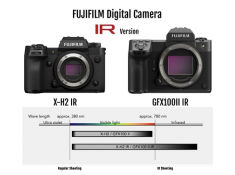 Fujifilm releases X-H2 IR and GFX100II IR infrared camerasThursday 24 July 2025
Fujifilm releases X-H2 IR and GFX100II IR infrared camerasThursday 24 July 2025 -
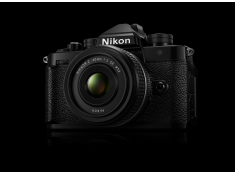 Nikon Zf 2 may just be a rumorThursday 24 July 2025
Nikon Zf 2 may just be a rumorThursday 24 July 2025 -
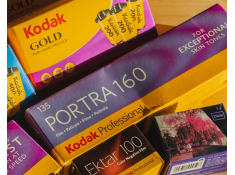 Kodak Portra 160 Review 2025:The Film Stock that is easily overlookedMonday 21 July 2025
Kodak Portra 160 Review 2025:The Film Stock that is easily overlookedMonday 21 July 2025 -
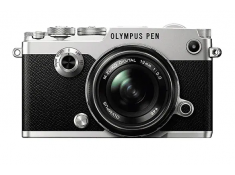 Will Olympus PEN-F be updated with new models?Wednesday 16 July 2025
Will Olympus PEN-F be updated with new models?Wednesday 16 July 2025 -
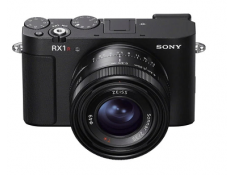 Sony RX1R3 was suddenly released, let's see what upgrades there areWednesday 16 July 2025
Sony RX1R3 was suddenly released, let's see what upgrades there areWednesday 16 July 2025












